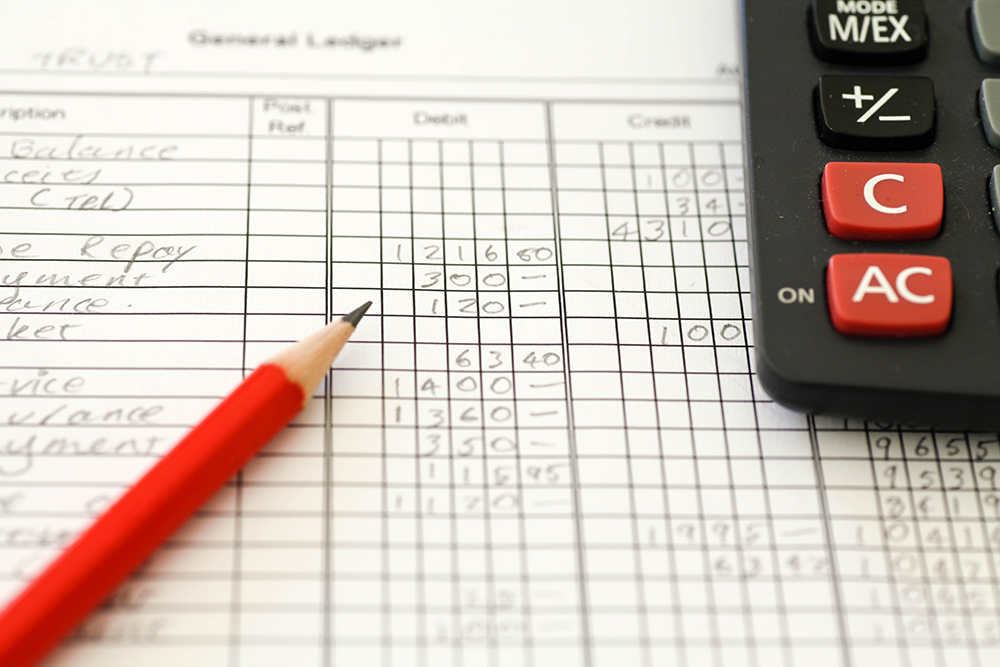What is a General Ledger?
Back to all Small Business guides

‘Keeping the books’ or ‘maintaining the ledger’ may be common phrases in financial circles, but what does it involve, what is a ledger, and why is it important to a business?
What Is a General Ledger?
A general ledger (GL) is the means by which a business keeps a record of its total financial accounts. It will typically include assets, liabilities, equity, expenses, and income or revenue. The general ledger will form the basis of a double-entry accounting system. While in the past, the GL may have been recorded in a spreadsheet, it is likely that now it will be embedded in your accounting software.
A general ledger has four main components
- Journal entry: Information about each entry posted to an account and the entry date
- Description: A description of the transaction
- Debit and credit columns: Each journal entry is posted as either a debit or a credit
- Balance: A running balance is kept for each account.
What is Double-Entry Accounting?
One of two primary accounting methods, along with single entry, double-entry accounting relies on a two-sided accounting entry to maintain financial information. This means that each time you enter a debit on a general ledger account, you also have to enter a credit on another general ledger account. Compared with single-entry accounting, double-entry makes it easier to prepare financial statements and improves accountability. The equation (Assets = Owner’s Equity + Liabilities) is the foundation of double-entry bookkeeping.
How a General Ledger Works
Making a general ledger begins with creating a journal or log containing the details of every business transaction as they occur. Each transaction must be categorised under a relevant account, such as sales, cash, or accounts payable. These transactions, referred to as ‘journal entries’, are posted as either a debit or credit, and their totals must balance. Balancing the budget involves subtracting total debits from total credits.
For example, if a company makes a sale, its revenue and cash balances increase by an equal amount. If it borrows money, the cash and liability balance increase equally. At the end of each accounting period, your accountant will reconcile the information inside these accounts and transfer your journal entries to the GL.
What is the GL Reconciliation Process?
During the reconciliation process, accounts will be double-checked for accuracy. The process begins by gathering the information for each account in review, then examining any journal entries that have been made to correct any errors in the ledger.
With journal corrections in mind, balances in the general ledger are compared against financial data, such as bank statements. If discrepancies are found, it will be a case of looking for unusual transactions or otherwise explaining the error.
What Is the Purpose of a General Ledger?
Accountants, company managers, investors and other stakeholders use general ledgers to assess a company’s financial performance. As a small business, a GL will help you track, evaluate and accurately record every financial transaction you conduct. As all income and expenditure is in one place, it is easier to manage your taxes and file your tax returns. A general ledger will also help you to understand your business better. It reports real revenue and expenses to stay on top of spending and provides the clarity and detail needed to help you spot unusual transactions. Importantly, the information within the general ledger is also valuable when it comes to compiling vital financial statements such as your cash flow forecast, income statement and balance sheet.
Examples of General Ledger Accounts
A few basic examples will help you understand how the general ledger works.
-Example 1: You pay an expense of £500 -You will debit ‘expense’ and credit ‘cash’. -Example 2: You receive £200 cash -In this example, you should debit ‘cash’ and credit ‘accounts receivable’. -Example 3: You owe £2000 -You would debit ‘accounts payable’ and credit ‘cash’.
What’s the difference between a subledger and a general ledger?
The subledger, or subsidiary ledger, provides the detail behind entries in the general ledger. Only high-activity accounts in your general ledger will use a subledger, and they’re typically only used in larger organisations with more complex general ledgers and financial information. For smaller businesses, this level of detail will likely be too difficult and time-consuming to be of great value.